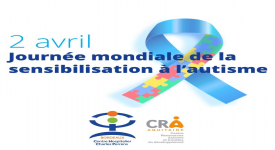Effects of mini-basketball training program on social communication impairments and regional homogeneity of brain functions in preschool children with autism spectrum disorder
BMC Sports Sci Med Rehabil. 2024 Apr 24;16(1):92. doi: 10.1186/s13102-024-00885-7.
ABSTRACT
BACKGROUND: Social communication impairments (SCI) is a core symptom of autism spectrum disorder (ASD) and is marked by challenges in social interaction. Although physical exercise has been shown to improve SCI, this finding has not been supported by comprehensive scientific evidence. Existing research has established a strong link between the SCI in children with ASD and abnormalities in regional homogeneity (ReHo). Therefore, investigating the effects of physical exercise on SCI and Reho in patients with ASD may help to elucidate the neurological mechanisms involved.
METHODS: The present study included 30 preschool children diagnosed with ASD, with 15 participants in each group (experimental and control). The experimental group underwent a 12-week mini-basketball training program (MBTP) based on routine behavioral rehabilitation, while the control group only received routine behavioral rehabilitation. The Social Responsiveness Scale-Second Edition (SRS-2) was employed to assess SCI in both groups. Resting-state functional magnetic resonance imaging technology was used to evaluate ReHo in both groups.
RESULTS: After 12-week of MBTP, significant group × time interactions were observed between the experimental and control groups in total SRS-2 scores (F = 14.514, p < 0.001, ηp2 = 0.341), as well as in the domains of social cognition (F = 15.620, p < 0.001, ηp2 = 0.358), social communication (F = 12.460, p < 0.01, ηp2 = 0.308), and autistic mannerisms (F = 9.970, p < 0.01, ηp2 = 0.263). No statistical difference was found in the scores for the social awareness subscale and social motivation subscale in the group × time interaction (all p > 0.05). The experimental group exhibited increased ReHo in the right Cerebellum_Crus1 and right parahippocampal gyrus, coupled with decreased ReHo in the left middle frontal gyrus (orbital part), left superior frontal gyrus (dorsolateral), left postcentral gyrus, and right superior parietal gyrus. Furthermore, a decrease in ReHo in the left postcentral gyrus positively correlated with changes in social communication scores in SCI behaviors (p < 0.05).
CONCLUSIONS: Our study underscores the effectiveness of a 12-week MBTP in ameliorating SCI and abnormalities in ReHo among preschool children with ASD.
TRIAL REGISTRATION: The trial is retrospectively registered on the Chinese Clinical Trial Registry (ChiCTR1900024973; August 5, 2019).
PMID:38659073 | DOI:10.1186/s13102-024-00885-7




